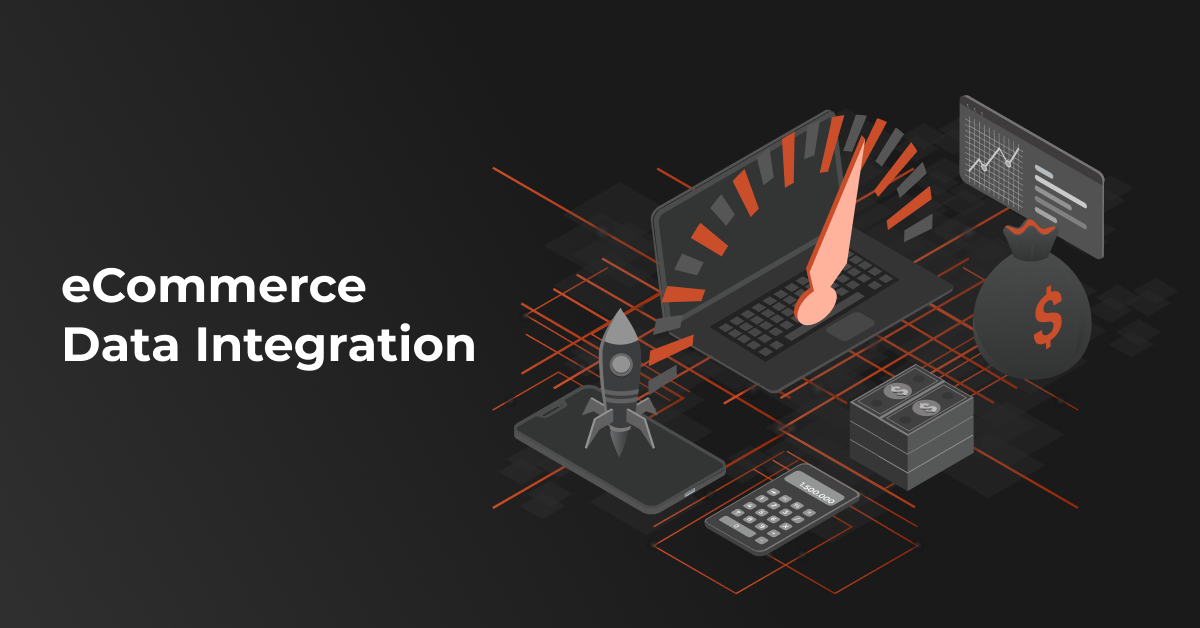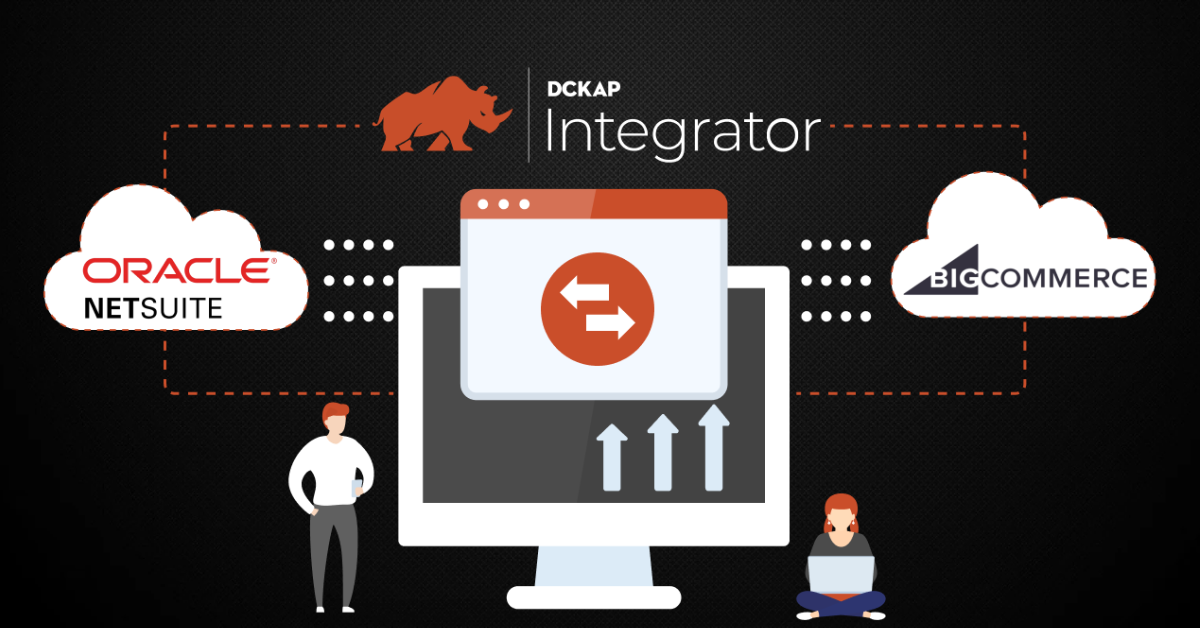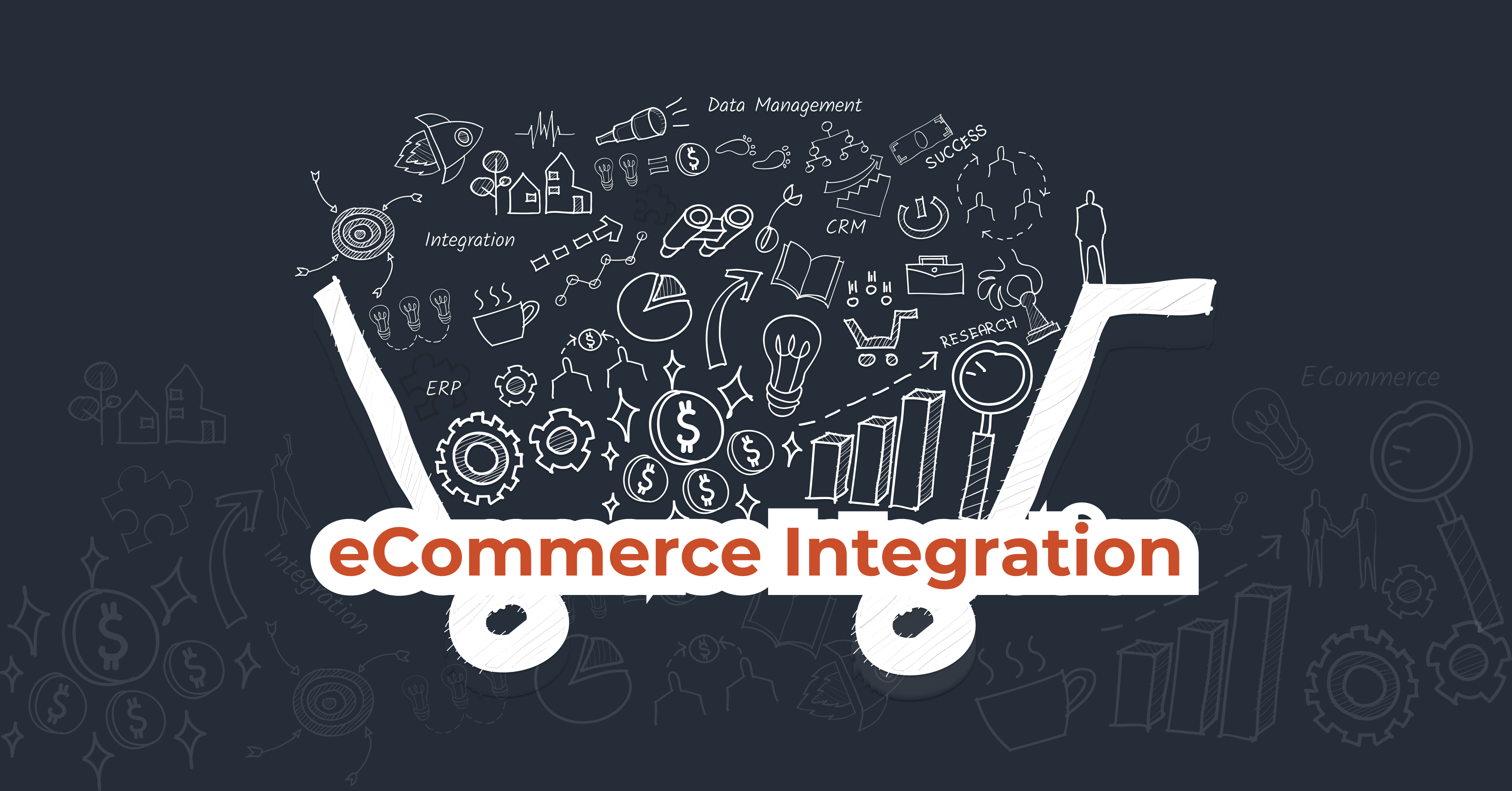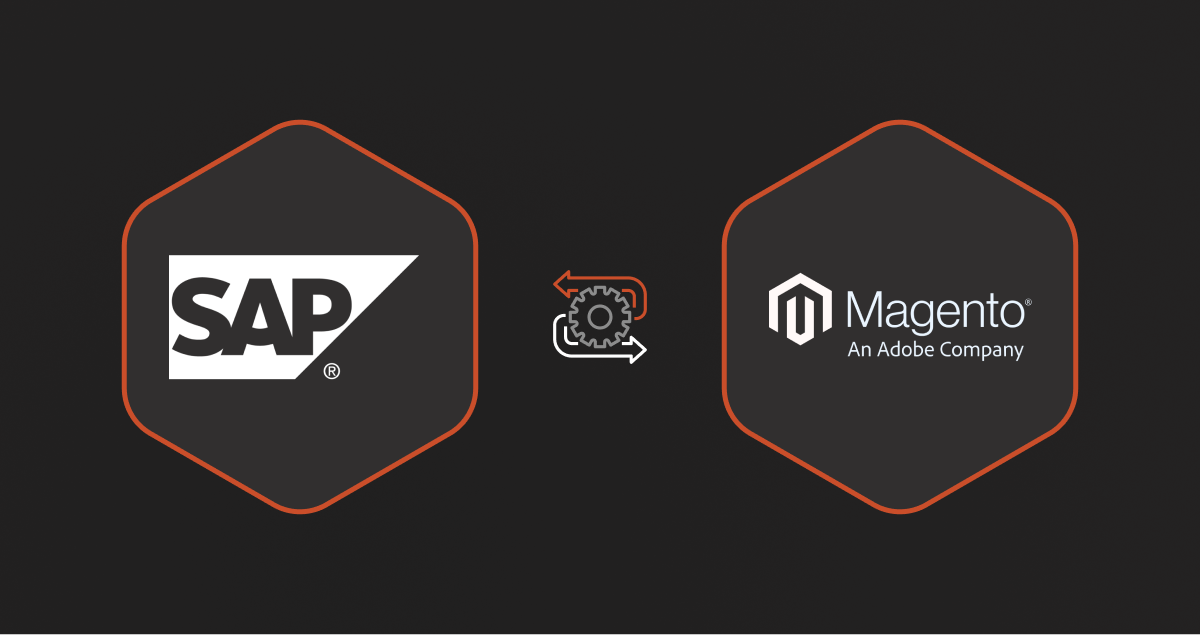Data integration involves connecting and synchronizing a company’s systems, channels, and applications to form a unified technology ecosystem, enabling automatic data exchange between these systems.
eCommerce integration, simply put, is connecting a business’s front-end ecommerce platform or online store to its back-end applications such as ERP (enterprise resource planning), inventory management, shipping, accounting, CRM (customer relationship management), marketing automation, and others.
The integration allows wholesalers, manufacturers, and retailers to create a bi-directional information flow between the systems, enabling real-time access to data about sales orders, customers, products, and inventory and facilitating a seamless end-to-end customer experience.
8 Common Use Cases For eCommerce Data Integration
Here are a few most common and useful integrations that every business needs.
1. ERP Integration
Connecting your online business with ERP solutions like NetSuite, SAP, Acumatica, or Microsoft Dynamics optimizes the order fulfillment workflow by enabling automated updates for order confirmation, shipment tracking, and order statuses in real time.
2. Payment Service Providers (PSP) Integration
PSP integration improves customer experience by accelerating payment processes and simplifying account management. Moreover, it enables business owners to accept a wide range of online payment methods, like online banking, credit cards, debit cards, e-wallets, and cash cards.
3. Inventory Management System Integration
Linking your online store with inventory management systems such as Epicor or NetSuite ensures up-to-date information on product availability and tracking. This reduces shopping cart abandonment, optimizes stock management, helps avoid overselling, and minimizes listing errors, maintaining accurate inventory levels across all platforms and channels. It also helps businesses anticipate demand fluctuations, manage seasonality, and optimize production based on real-time data.
4. CRM Integration
Linking CRM systems such as Microsoft Dynamics 365, Zoho, Zendesk, or HubSpot with ecommerce platforms such as Shopify, and BigCommerce helps handle customer information, track support requests, and oversee sales cycles, all in one place. This information can be utilized across departments to enhance the overall customer experience by optimizing buyer journey and channel effectiveness.
5. Email Marketing Integration
Integrating email marketing tools with ecommerce platforms offers many advantages including personalized and effective email campaigns, providing tailor-made promotional content and offers based on customer preferences and behavior.
6. Marketing automation/analytics Integration
Integrating ecommerce platforms with marketing and analytics tools enables businesses to observe and analyze online browsing patterns, assess marketing campaign effectiveness, and evaluate channel performance, thereby uncovering actionable insights.
7. Shipping/Logistics Integration
Accurate and real-time shipment tracking information can significantly affect the experience of your web store. This integration enables businesses to process orders and achieve their shipping performance goals, while also keeping customers informed about the location of their products and their expected delivery times.
8. Point of Sale (POS) Integration
POS ecommerce integration streamlines sales and inventory management by synchronizing online and in-store transactions, enhancing operational efficiency, and providing real-time inventory updates. It also allows retailers to manage their inventory from any point-of-sale device (tablets, laptops, or mobile) without hassle.
Related read: eCommerce Integration Solutions & Top Use Cases for 2024
eCommerce Integration Methods
Integrations can be tricky, given no two systems are the same. The choice of integration method and integration tools depends on internal expertise, systems, applications, or databases being integrated, budget constraints, and more.
Here are some common integration methods.
Point-to-Point (P2P) Integration
It involves using custom codes to connect the ecommerce store and the business applications of interest.
Pros:
- Complete control over the integration process
- Addresses the custom or specific integration needs of your business
Cons:
- Necessitates a skilled and experienced development team
- The absence of a centralized place to monitor integration complicates troubleshooting
- Time-consuming
- Lack of end-to-end automation of business processes
Native Integration
eCommerce platforms can be connected to applications using their API (application programming interface).
Pros:
- Integration might be part of the subscription without additional charges or at a minimal cost
- Application support teams could assist in building and maintaining integration
Cons:
- Apps might not provide all the necessary integrations for your business
- Custom integration is limited, primarily catering to common use cases
- Lack of end-to-end automation
Integration Platform as a Service (iPaaS)
A cloud-based third-party platform or middleware, like DCKAP Integrator, provides a set of tools and services to facilitate the integration of various software applications, data, and processes across different environments.
Pros:
- A single dashboard for a unified view of integrations
- Robust data protection, privacy, and security measures
- Availability of pre-built connectors, templates, and workflows
- Scalable integrations with different systems, applications, data warehouses, databases, or data sources
- Flexible pricing structures based on defined features
Cons:
- May involve an initial learning curve
Read more: iPaaS: Examples, Benefits & Use Cases [2024 Update]
Why Choose DCKAP Integrator for Seamless eCommerce Data Integration
DCKAP Integrator is a user-friendly, low-code, cloud-based data integration platform designed especially for distributors. It connects and synchronizes between any number and type of business applications and data sources—ERP, CRM, WMS (workforce management system), ecommerce, PIM (product information management, databases, EDI (electronic data interchange), and others.
Here’s what makes DCKAP Integrator a market-leading iPaaS.
- Limitless connections and robust integration
- Quick deployment with pre-built integration templates and connectors
- Scalability to extend integration to any new system in the future
- Real-time synchronization
- Alert notifications on any integration failure
- Regular feature upgrades
- Ease of use
- Drag-and-drop feature for easy and quick project development
- Custom APIs for integrating multiple systems
- Versatile and user-friendly interface
6 Benefits of eCommerce Data Integration
Let us look at both short-term and long-term benefits.
- Elimination of manual data entry: eCommerce integration eliminates the need for duplicate and manual data entry, which is both time-consuming and prone to errors. Centralization of data from different sources eliminates data silos, ensures a single source of truth, and supports data-driven decision-making.
- Data integration and accuracy: Integration guarantees that data remains consistent and current across all platforms. For example, integrating accurate inventory data, including price, availability, and other key product features, plays a crucial role in customer satisfaction and retention. This integration also simplifies the expansion and synchronization of inventory across all sales channels.
- Operational efficiency: Integration streamlines the data exchange process between online and offline channels, saving significant time by automating inventory tracking and updates. This efficiency allows businesses to concentrate on improving product and service quality without being hindered by operational delays.
- Business growth: Data integration across systems and platforms ensures customers receive accurate information and more choices, aiding in customer acquisition and business growth. It provides the flexibility to venture into more online marketplaces without compromising business operations.
- Streamlined pricing: Real-time updates on price changes and product information through a single data entry point simplify the process. This ensures updates are disseminated across the system, maintaining transparency and uniformity in pricing and product details across the business.
- Enhanced customer experience: Connecting your ecommerce store with your ERP, warehouse management, shipping, and CRM systems simplifies intricate post-purchase operations like returns or exchanges. This enhances customer trust in your business, increasing the likelihood of their return for future purchases.
Key Steps in Getting Your Data Ready for eCommerce Integration
Integrating systems requires a thorough understanding of your data and the applications generating it. Understanding which transaction or information is critical helps in identifying the data processes that need to be automated.
Identify the Data Types for Order Processing
To achieve seamless integration, you need to identify essential data points for successful order processing. Common types of order data include:
- Customer’s first and last names
- Customer email, billing address, and shipping address
- Customer’s phone number
- Shipping and tracking details
- Product ID and SKU
- Product specifications (such as size, color, quantity, and price)
Clean Your Data
Cleanse your data to enhance the efficiency of your integration process.
- Eliminate duplicate fields and customer entries
- Rectify any incomplete or inconsistent records to ensure accurate data across systems
- Update your ecommerce platform, CRM, and accounting or ERP systems
- Incorporate an accounting SKU for each product in your ecommerce store to minimize data translation needs
- Align sale units with the stock-keeping units
Choosing your tech vendors wisely has a significant impact on integrations. Each software vendor has their ecosystem with varying support for data integration tools, data connectivity, cost, and compatibility with the existing business systems. The good news is working with an expert integration partner can help you ace these steps for a successful integration.
Final Words
eCommerce data integration is essential for enabling seamless data flow between platforms and systems and optimizing ecommerce operations. It simplifies processes, from order fulfillment to customer service, ensuring accuracy, productivity, and efficiency. While the initial setup requires careful planning and data management, the long-term benefits include improved customer experiences and business growth and scalability.
To know more about how DCKAP Integrator can accelerate your data integration journey and company growth, get in touch with us today.
Contents




